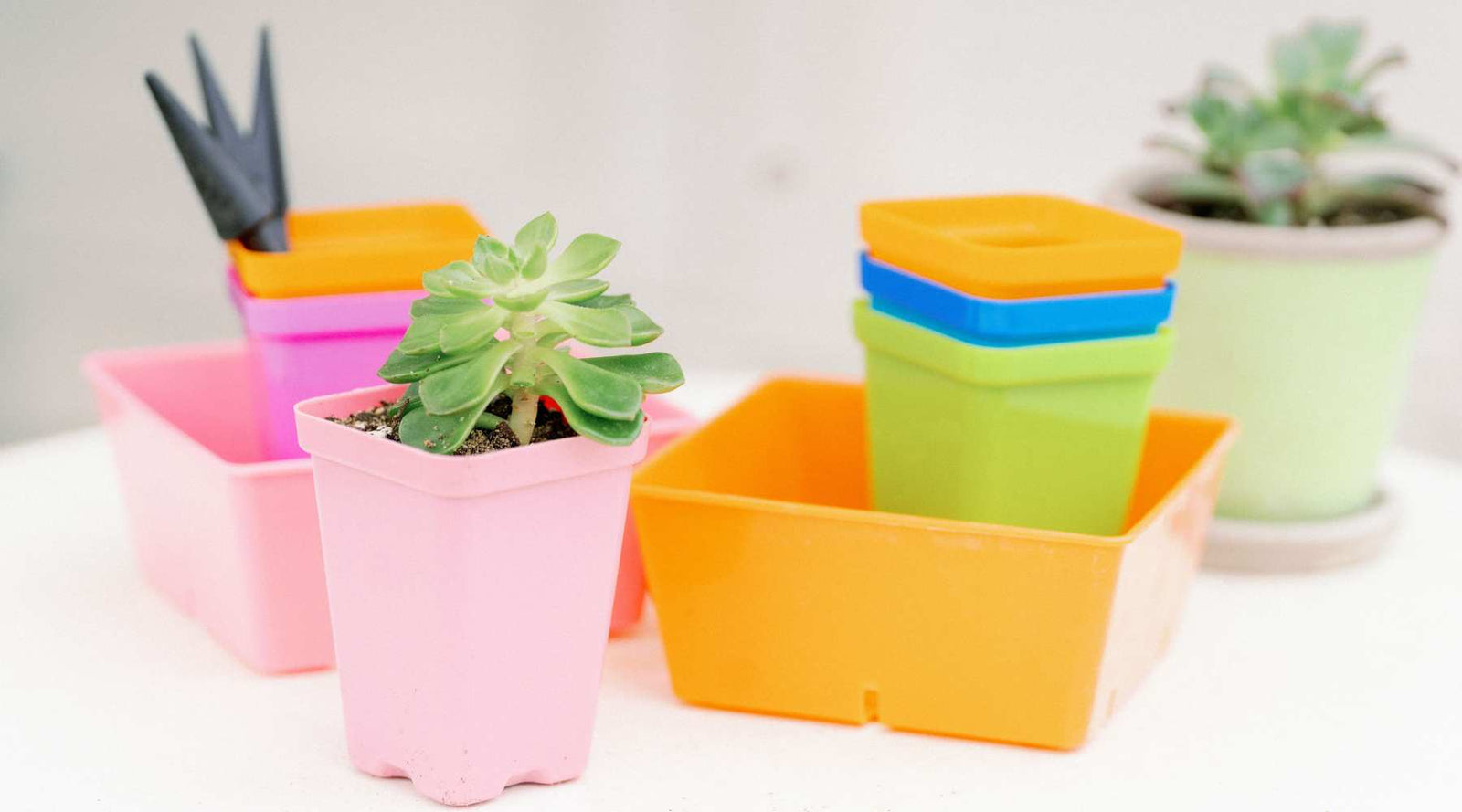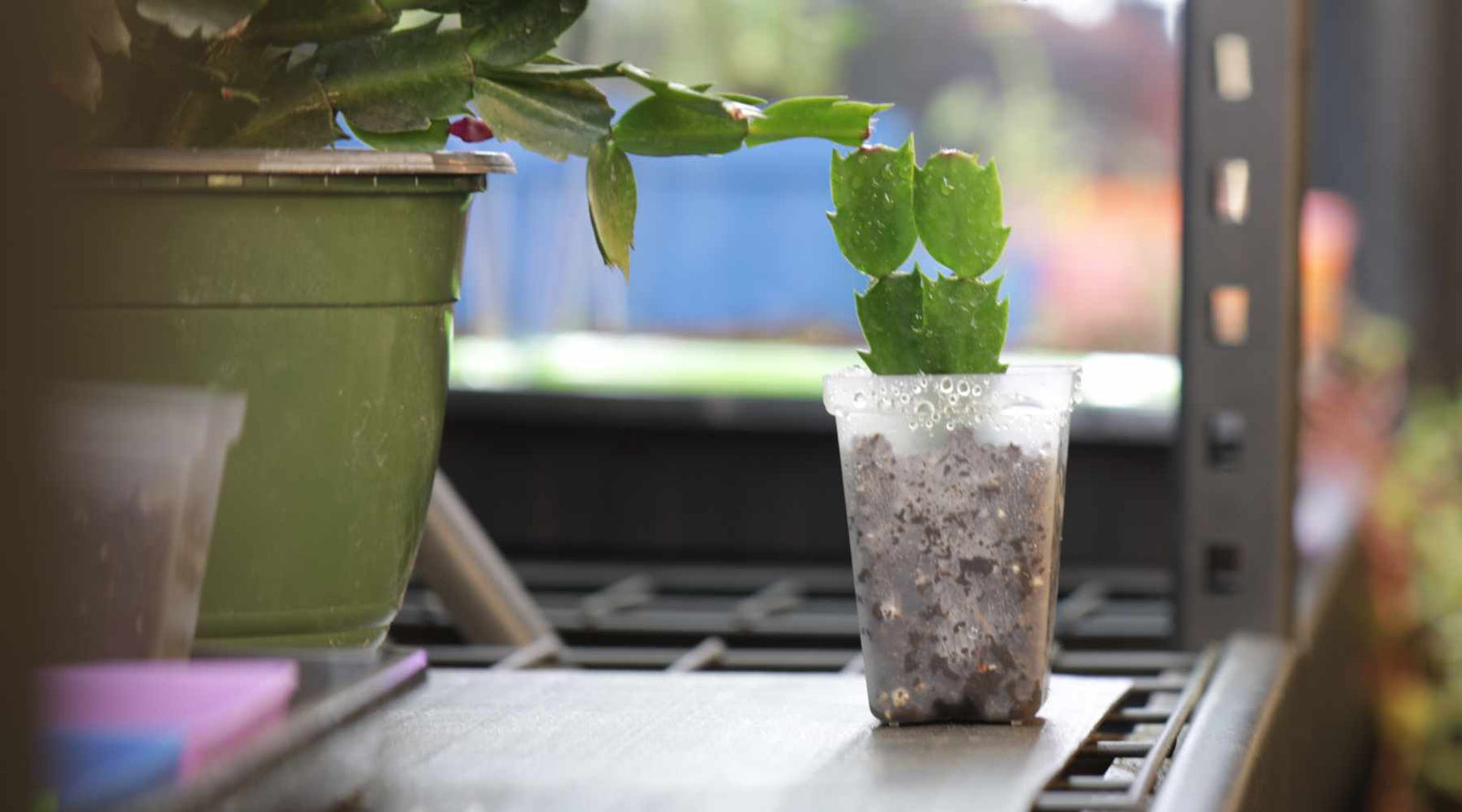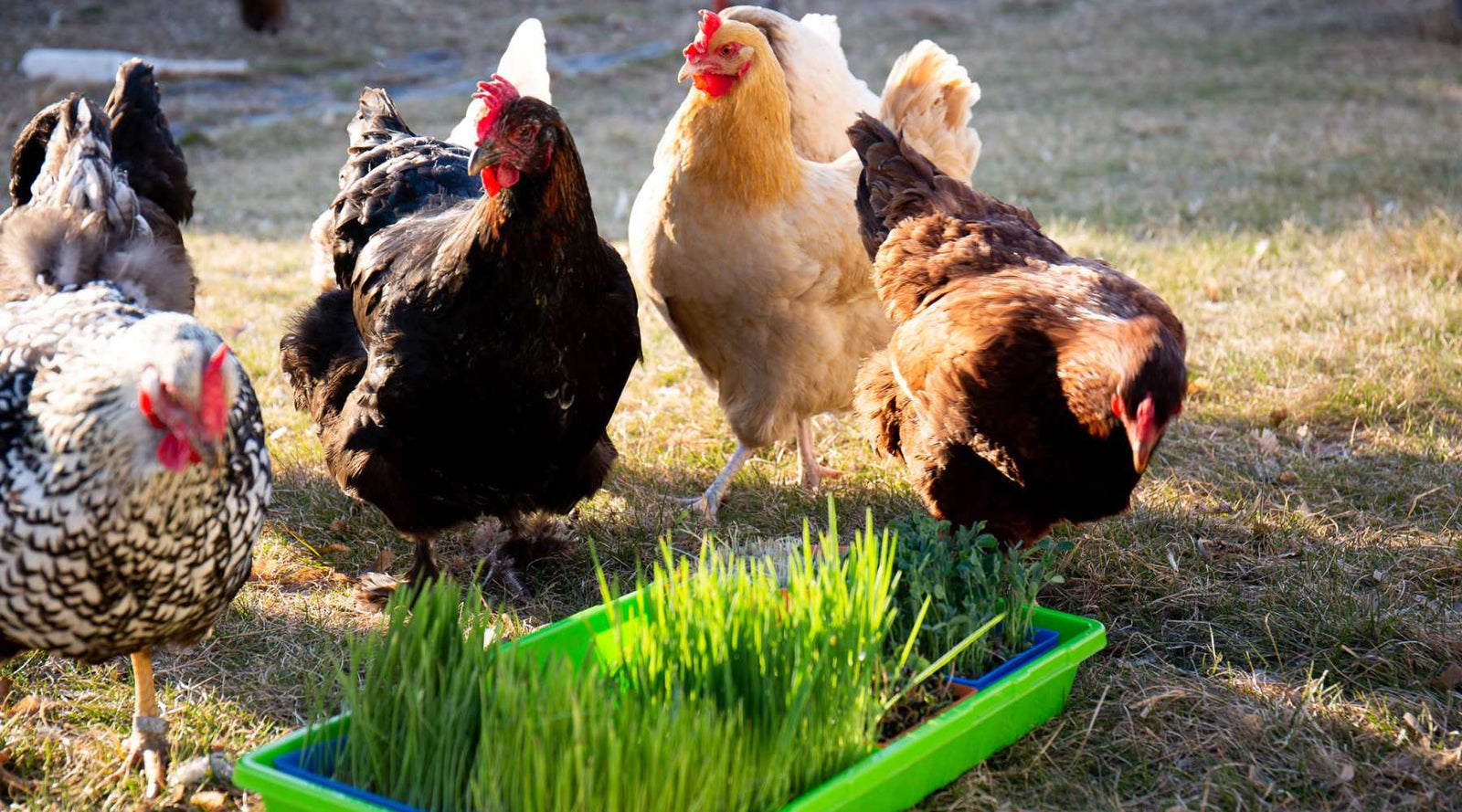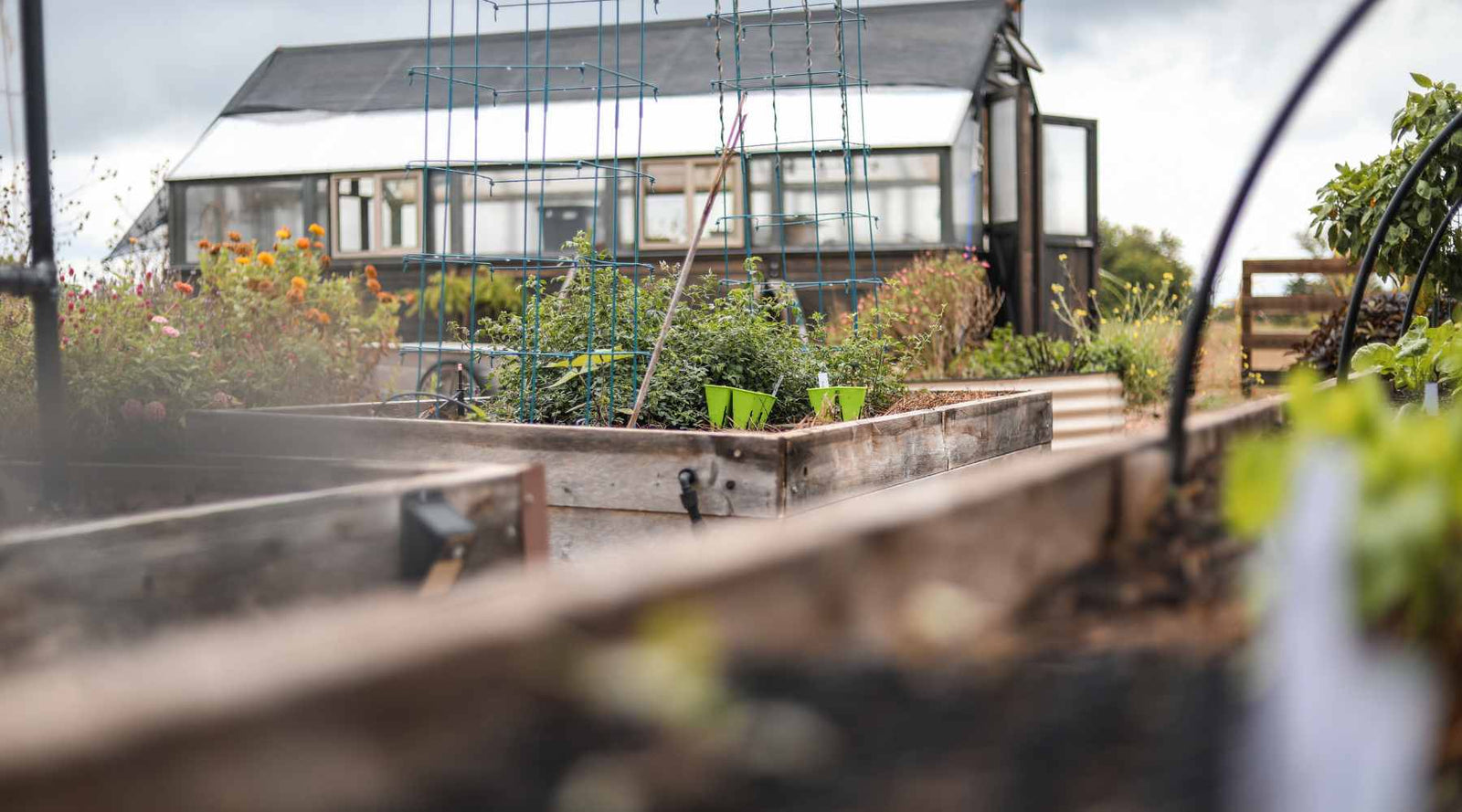Free Shipping on Orders over $75 to the Contiguous US
Free Shipping on Orders over $75 to the Contiguous US
How to Propagate Succulents from Leaves- Beginner's Step-by-Step Guide to Propagating Succulents
November 04, 2024 6 min read 0 Comments

Are you interested in propagating succulents? Exchanging succulent cuttings with friends is a great way to create more plants at a low cost. It is a fun and easy activity to do with kids as well. You can propagate succulents from succulent leaves, cuttings, or the tops of leggy succulents.
No need for fancy equipment, this project requires only a few basic items. The biggest challenge of this project will be limiting how many succulent plants you create!
Why are succulents so popular?
Succulents make excellent house plants, especially for people with limited time or skills when it comes to growing. They require less frequent watering, making them popular with busy schedules.
Propagating succulents from existing plants around your home is a quick and straightforward process. Because succulents grown from cuttings are so easy to propagate, growing a collection can be done on a dime. Rooting leaves generally happens in 2-3 weeks, so it is also a fast way to create more plants for your space or to give as gifts.
Related: 10 Must-Have Houseplants For Gardeners and Plant Lovers
Understanding Succulent Basics
Succulents are plants that store up excess moisture in their leaves to survive during drought. For this reason, infrequent watering is a must. They require extremely good drainage to avoid too much saturation. You want the water to drain quickly and fully. They do best in soils that contain perlite, gravel, sand or pumice.

What tools do you need to root cuttings from succulents?
1. A mother plant to take succulent leaves cuttings from
2. Pruners or a knife (optional)
3. A warm space for cuttings and leaves to cure
4. Bonsai / cactus soil mix or succulent soil
7. Growing container for new plants (i.e. 5x5, 2.5" pot)

Propagation Techniques for Succulents
Succulents can be propagated from:
- Cuttings - Take the top few sections of leaves or an off-shoot branch.
- Succulent leaves - A single leaf may take up to a year after it roots to produce a full-sized plant.
- Stems - An overly tall stem can be cut into multiple sections to make more plants. Just be sure you know which end is up.
- Pups - These are small baby plants growing off the side of the main plant that can be cut off and replanted on their own. It works particularly well with aloe.
- Rooting stems - Some varieties will begin to grow roots off of downward-pointing stems. These can be cut off and planted right away. These will grow to full-sized plants the quickest.
Any way you choose can work, but some varieties can be more challenging than others. Two of the easiest succulents to propagate from cuttings and leaves are Sedum and Echeveria varieties. Seedling trays work great for methods of propagating succulents.
The Easiest Method to Propagate Succulents
- Remove cuttings or leaves from the main stem, being careful not to tear them. You want a clean break for optimal root growth. Use clippers for thicker stems.
- Let the cuttings dry out and callus for about 4-5 days. This step is crucial as it prevents the leaves from absorbing too much moisture when they’re exposed to water later.
- Place the callused cuttings on top of well-draining soil (such as cactus or bonsai soil). Don’t bury the leaves deeply—just rest them on the surface of the soil mix. Stems can be buried to keep them upright.
- Mist the leaves lightly every few days to keep the environment slightly moist, but not soggy. Roots should begin to sprout in 2-3 weeks.
- Once roots have developed and baby succulents start to grow, you can then plant the rooted leaves into a well-drained soil mix.
Soil for Propagating Succulents
For succulent plant propagation from leaves and cuttings, it is important to use a well drained soil. We actually suggest not using soil at all in order to propagate succulents. Instead use a soilless mixture that contains ample amounts of peat or perlite to aid in extra drainage. Cactus soil mixes and bonsai mixes that comprise of pumice, gravel and sand also are a great alternative to use to propagate succulents.
Removing leaves from Succulents
When removing leaves from your succulents, gently twist and pull them to avoid tearing and retain the integrity of the cutting. You want to avoid a messy tear as it will fail to root and form new root growth. If using a pruner or shears for the project, make sure they are sterile. You can clean your equipment using alcohol to prepare it for use. This is especially important if cutting from someone else's succulent plants. Trading succulent leaf cuttings between friends can be a frugal way to propagate succulents to add to your collection.

Drying Out Succulent Leaves or Stems
After removing the leaves or stems:
- Lay them out flat on a paper towel or directly on top of your growing container to dry. You will want to set it in a warm place with indirect light for around 4 days.
- Avoid direct sunlight on the leaf-cutting during this step. This curing process will allow the leaves or stems to callus and heal.
- Think of this as healing the wound.
The main objective here is to add a layer of protection for your newly forming baby succulent cutting. Without this step, the succulent cutting or succulent leaf can be susceptible to over-saturation as the wound will absorb more moisture if not healed. This is a vital step that must not be skipped!

Rooting and Planting Succulents from Cuttings
The callused succulent leaf cuttings will soon start to sprout roots and form baby plants. The original succulent leaf will shrivel up. Do not discard the leaf-cutting until it is thoroughly dried out, as it is the primary source of nutrition for your baby succulent plant rooting. Remember that this process can take up to a year with finicky varieties.
Cuttings made from stem sections, pups, or rooting stems generally do not have this shriveling stage. They will grow into self-contained plants more quickly than leaf cuttings.
Why Take Cuttings from Succulents
Taking cuttings from succulents is a simple way to create more plants. We recommend choosing leaves that are larger and healthier for succulent propagation. You will want to choose succulent cuttings in the same fashion. For example, with "string of pearls" variety we recommend picking a healthy strand for propagation that is free from disease and has no signs of dry out.

Before laying out the cuttings on the soil for rooting, give the soil mix a light spritz. As the new roots grow, lightly mist them with water to prevent them from drying out, but not too much as that could cause issues. You can also use a humidity dome during this step to create a moist environment for successfully propagating succulents. Once the rooting has happened, it is time to plant your new plant.
Why Are My Succulent Cuttings Dying?
One of the biggest challenges for growers tending to succulents is overwatering. If you are noticing that your cutting is mushy and decaying, you may have over-watered your succulent cutting. The trick to remember is that you only want to lightly spray the rooting cutting. There should be no direct watering or submersion. Another possible cause could be drying out. If you live in an especially arid area, you might want to cover your rooting succulent cutting with a humidity dome to retain moisture.

You will want to grow this shallow succulent in well-drained soil such as cactus or bonsai potting soil. From there, wait for 24 hrs and lightly water.

Water Propagation vs Potting Soil Propagation, Which Works Better?
Succulent leaves and cuttings can be propagated both ways. If using the water method, you will want to place the succulent leaf or cutting on top of a bottle or container filled with water. Some use plastic wrap with leaves stuck into the plastic, allowing exposure to the water without submersion. This method of succulent propagation is meant to encourage new roots to reach for the water. While this method works, the root system is not always as strong as a cutting rooted in the potting soil. This is personal preference as they both will result in new plants.

Caring for Your New Baby Succulent Plant
Your new tiny baby plants will need infrequent watering, indirect sunlight and good drainage. One of the most common mistakes made with succulents is overwatering. Limit watering to only once or twice a week for best results. Now that you have learned a new skill, share it with others!
Also in How-to-Guides

Christmas Cacti Care and Propagation
August 27, 2024 5 min read 0 Comments

How to Grow Fodder Indoors for Chickens
October 02, 2025 9 min read 0 Comments

Prepare Your Garden for Winter By Completing These 8 Chores
October 02, 2025 12 min read 0 Comments
Recent Articles
- Christmas Cacti Care and Propagation
- How to Grow Fodder Indoors for Chickens
- Prepare Your Garden for Winter By Completing These 8 Chores
- How to Determine the Texture of Soil | Textural Determination with the Soil Texture Pyramid
- Growing for Food Security with Limited Space
- Top 8 Best Foods to Grow and Preserve
- 10 Things I Have Learned As A New Gardener
- Using Silage Tarp for Organic Weed Control and Bed Prepping
- Storage and Preservation of Garden Vegetables
- How to Propagate Succulents from Leaves- Beginner's Step-by-Step Guide to Propagating Succulents
Subscribe
Sign up to get the latest on sales, new releases and more …
